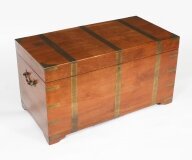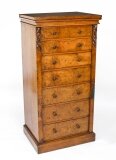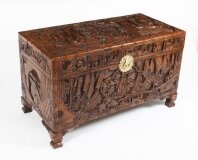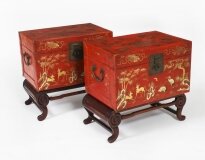Régence style, transition in the decorative arts from the massive rectilinear forms of Louis XIV furniture to those prefiguring the Rococo style of Louis XV. The style encompasses about the first 30 years of the 18th century, when Philippe II, duc d’Orléans, was regent of France. The restraint arrived at during this period resulted from a strong reaction against the pomposity of the court under Louis XIV. The evolution of the intimate petit salon as opposed to the formal, ceremonial state apartments of the past brought with it a penchant for graceful, easily movable furniture, designed to showcase the impeccable craftsmanship of the period. At Versailles, where furniture had formerly represented the firmly placed hierarchy of the court, rooms were divided into smaller, more intimate spaces calling for a new style.
The aristocracy made the decoration of their Parisian homes a lifetime occupation. Jean Berain, Charles Cressent, Robert de Cotte, and the painter Antoine Watteau, whose pictures were painted on the panelled salon walls to harmonize with the gentle spirit of the period, are among the important names connected with the new delicacy. Régence furniture did away with heavy, carved ornamentation and substituted flat, curving motifs—characteristically foliage and bouquets framed by flowing ribbons and bows.
The intricate tracery in brass and shell marquetry on ebony was adapted to the new taste. Woods such as walnut and mahogany were used as veneer. A sculptural form in the shape of a female bust, called an “espagnolette,” made its appearance as a gently curved ornamental mount for chair and table legs. The commode and writing table, both representing the new, intimate style of life, were introduced during this period.
Ormolu - Gilt Bronze (from French 'or moulu', signifying ground or pounded gold) is an 18th-century English term for applying finely ground, high-carat gold in a mercury amalgam to an object of bronze.The mercury is driven off in a kiln leaving behind a gold-coloured veneer known as 'gilt bronze'.
The manufacture of true ormolu employs a process known as mercury-gilding or fire-gilding, in which a solution of nitrate of mercury is applied to a piece of copper, brass, or bronze, followed by the application of an amalgam of gold and mercury. The item was then exposed to extreme heat until the mercury burned off and the gold remained, adhered to the metal object.
After around 1830 because legislation had outlawed the use of mercury other techniques were used instead. Electroplating is the most common modern technique. Ormolu techniques are essentially the same as those used on silver, to produce silver-gilt.
Kingwood
is a classic furniture wood, almost exclusively used for inlays on very fine furniture. Occasionally it is used in the solid for small items and turned work, including parts of billiard cues, e.g., those made by John Parris. It is brownish-purple with many fine darker stripes and occasional irregular swirls. Occasionally it contains pale streaks of a similar colour to sapwood.
The wood is very dense and hard and can be brought to a spectacular finish. it turns well but due to its density and hardness can be difficult to work with hand tools. It also has a tendency to blunt the tools due to its abrasive properties.





































